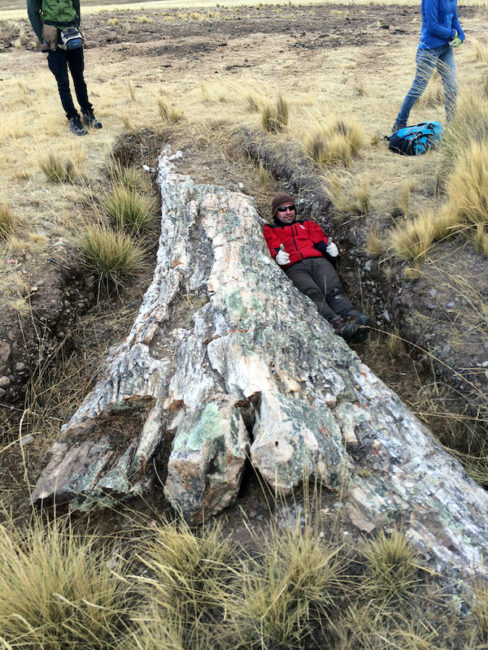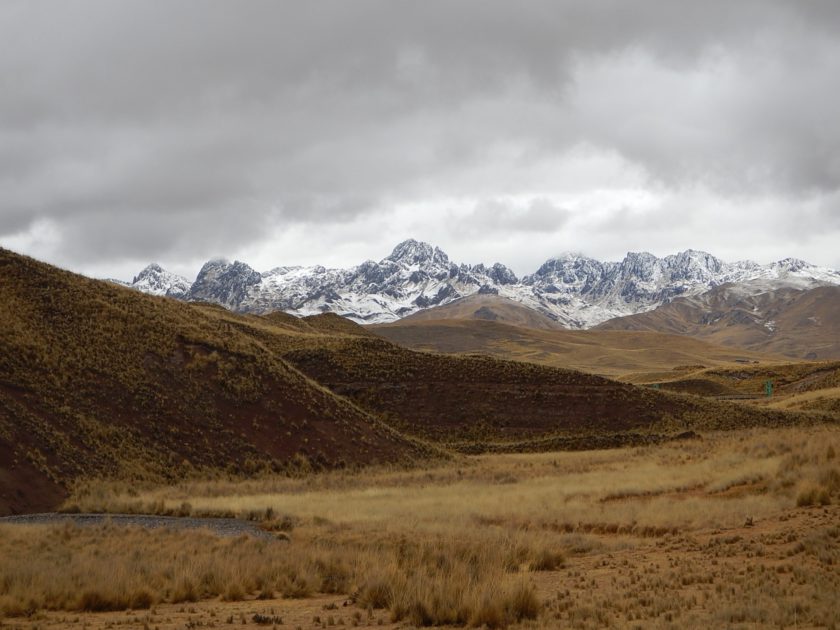
Climate models are being constantly worked on and improved. One specific example of environmental change concerns an understanding of how future precipitation will change over the Central Andean Plateau and Amazon Basin. Some models suggest it will become dryer and others suggest it will become a lot wetter. A new study within Science Advances explores what has actually happened in the past by looking at the fossil record (pollen, leaves, and wood) from the Central Andean Plateau.
Once you understand all the forces in play you can then refine the climate models.
What the researchers found was quite surprising and also revealing.
Study: Neogene precipitation, vegetation, and elevation history of the Central Andean Plateau
It was published in Science Advances on Aug 28, 2020.
We are on course to a level of CO2 by the end of this century that is on par with the the late Miocene and early Pliocene. Late Miocene is 10 million years ago and early Pliocene is 5 million years ago. What might not be truly appreciated is that within that period the Central Andean Plateau also doubled in elevation.
What they are doing within this paper is to provide paleobotanical evidence to document physical evidence of what actually happened to the climate. This then enables elements for testing the validity of climate models of the geologic past and for refining predictions of future climates in that region.
Yes, that really is a fossil tree that they found (pictured at the top). Clearly a considerable environmental change happened because trees like that don’t grow on the Central Andean Plateau.
What did they discover?

To answer that I’m turning to some materials provided by Smithsonian Tropical Research Institute …
“This tree and the hundreds of fossil wood, leaf and pollen samples we collected on the expedition, reveal that when these plants were alive the ecosystem was more humid—even more humid than climate models of the past predicted,” said Camila Martinez, a fellow at STRI, who recently finished her doctorate at Cornell University. “There is probably no comparable modern ecosystem, because temperatures were higher when these fossils were deposited 10 million years ago.”
The anatomy of the petrified (permineralized) wood the researchers found is very much like wood anatomy in low-elevation tropical forests today. Indeed, the altitude then was probably only 2,000 meters above sea level.
But that ecosystem did not last for long. Today, the arid, intermountain plateau lies at 4,000 meters above sea level.
Five million year-old fossils from the same sites confirmed that the Puna ecosystem that now dominates the Andes’ high mountain plateaus had been born: the younger pollen samples were mostly from grasses and herbs, rather than from trees. Leaf material was from ferns, herbs and shrubs, indicating that the plateau had already risen to its current altitude.
“The fossil record in the region tells us two things: both the altitude and the vegetation changed dramatically over a relatively short period of time, supporting a hypothesis that suggests the tectonic uplift of this region occurred in rapid pulses,” said Carlos Jaramillo, STRI staff scientist and project leader.
“Andean uplift played an important role in shaping the climate of South America, but the relationship between the rise of the Andes, local climates and vegetation is still not well understood,” Martinez said. “By the end of this century, changes in temperature and atmospheric carbon dioxide concentrations will again approximate the conditions 10 million years ago. Understanding the discrepancies between climate models and data based on the fossil record help us to elucidate the driving forces controlling the current climate of the Altiplano, and, ultimately, the climate across the South American continent.”
Environmental change – Insights
What is of course fascinating about this is not just how the CO2 increase altered the climate in the past, but also how plate tectonics played a role.
Yes the CO2 then was a lot higher and that altered the climate, but as is pointed out “the Andean uplift played an important role in shaping the climate of South America“.
Their data gathered from fossil evidence contains paleoprecipitation estimations. These strongly differ from those predicted by regional and global precipitation simulations for the Miocene and Pliocene. What appears to have happened is that there was a marked precipitation decrease over the Northern part of the Central Andean Plateau due to the Andean uplift.
The uplift of the Central Andean Plateau shaped the biome distribution and climate of the region.
How great was the uplift?
There was a rapid surface uplift of approximately 2500 m in elevation between 9 and 4.8 million years ago. That is a very dramatic change.
Once you gain insights into all the forces that shaped the past climate in the region you can then start to improve climate models.
